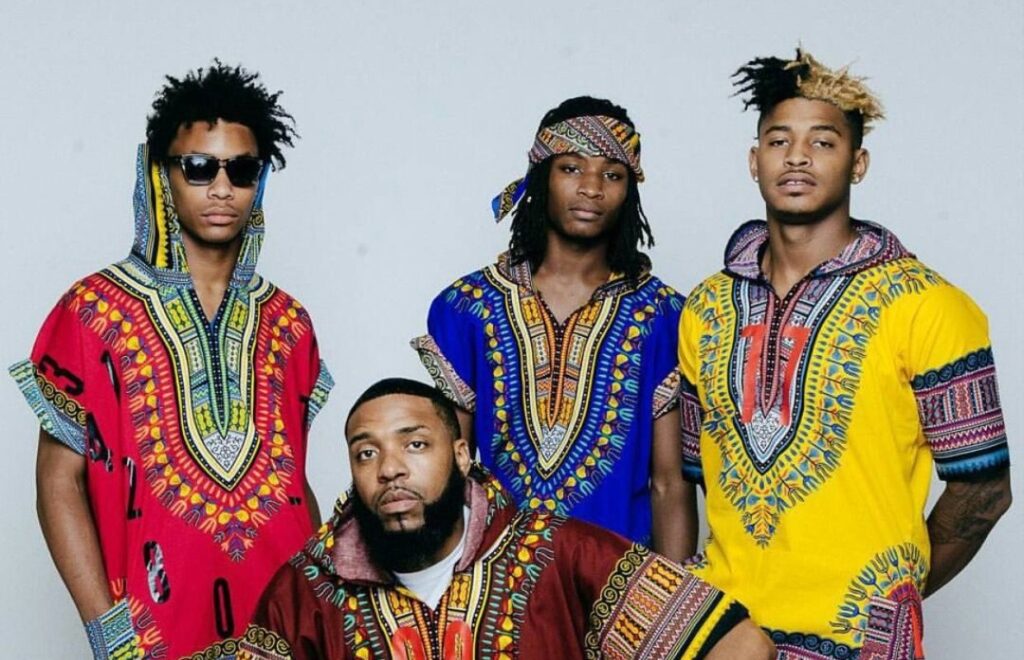The dashiki stands as a vibrant emblem of African culture, woven with a tapestry of history and heritage. Originating from West Africa, this garment has transcended geographical boundaries to become a cherished attire in various communities worldwide, especially among African Americans. Its evolution, from its traditional roots to its modern interpretations, reflects not just a piece of clothing but a narrative of identity and pride.
Origins and Cultural Significance
Traditional Roots
The term “dashiki” finds its linguistic origins in the Yoruba language as “dàńṣíkí,” which is a loanword from the Hausa language, specifically “dan ciki,” meaning ‘shirt’ or ‘inner garment.’ This linguistic journey underscores the interconnectedness of diverse African cultures, as the garment transcends linguistic and ethnic boundaries to become a shared symbol of identity.
Ethio-Inspiration
The iconic dashiki design, characterized by its vibrant colors and intricate patterns, owes its genesis to the “Angelina print.” This print, conceived by Dutch designer Toon van de Mannaker for Vlisco, draws inspiration from traditional silk embroidered tunics worn by Ethiopian women. The fusion of Dutch design sensibilities with Ethiopian influences encapsulates the essence of cultural exchange and adaptation.
The Rise of Dashiki
From Wax Print to Cultural Icon
The popularity of the Angelina print coincided with the release of the Ghanaian high-life hit song “Angelina.” This synchronicity led to the wax print pattern being christened with the song’s title, solidifying its cultural resonance. Across West Africa, the print found resonance under different monikers, such as “Ya Mamado!” in Congo and “Miriam Makeba,” paying homage to the legendary South African musician known for her fondness for wax prints.
African Diaspora
The diasporic journey of the dashiki parallels the diasporic experiences of African communities worldwide. African Americans, in particular, have embraced the dashiki as a symbol of cultural heritage and resistance against centuries of oppression. Its adoption in diasporic communities serves as a testament to the enduring legacy of African traditions in the face of adversity.
Variations and Adaptations
Formal vs. Informal
The dashiki encompasses a spectrum of styles, ranging from casual, loose-fitting pullovers to meticulously tailored suits. Its adaptability allows it to transition seamlessly from informal gatherings to formal occasions, serving as a versatile wardrobe staple for individuals of all ages and backgrounds.
Ornate Embellishments
One of the distinguishing features of the dashiki is its ornate embellishments, characterized by intricate embroidery and meticulously tailored neck and sleeve lines. These embellishments not only showcase the craftsmanship of artisans but also serve as a visual testament to the rich cultural heritage embedded within the garment.
Contemporary Relevance and Revival
Fashion Forward
In recent years, the dashiki has experienced a resurgence in popularity, fueled by a renewed interest in African fashion and identity. Its vibrant colors and bold patterns have found favor on international runways and red carpets, serving as a symbol of cultural pride and sartorial expression.
Beyond Fashion
Beyond its aesthetic appeal, the dashiki carries profound political and social symbolism, serving as a rallying point for movements advocating for racial justice and cultural empowerment. Its visibility in protests and public demonstrations underscores its role as more than just a garment but a potent symbol of resistance and resilience.
Conclusion
The dashiki stands as a testament to the enduring legacy of African culture, weaving together threads of tradition, innovation, and resilience. From its humble origins in West Africa to its global prominence today, the dashiki continues to transcend boundaries, uniting diverse communities under a shared heritage. As we celebrate its vibrant colors and intricate patterns, let us also honor the profound narrative of identity and pride that it represents, embodying the spirit of a people who refuse to be confined by borders or boundaries.






